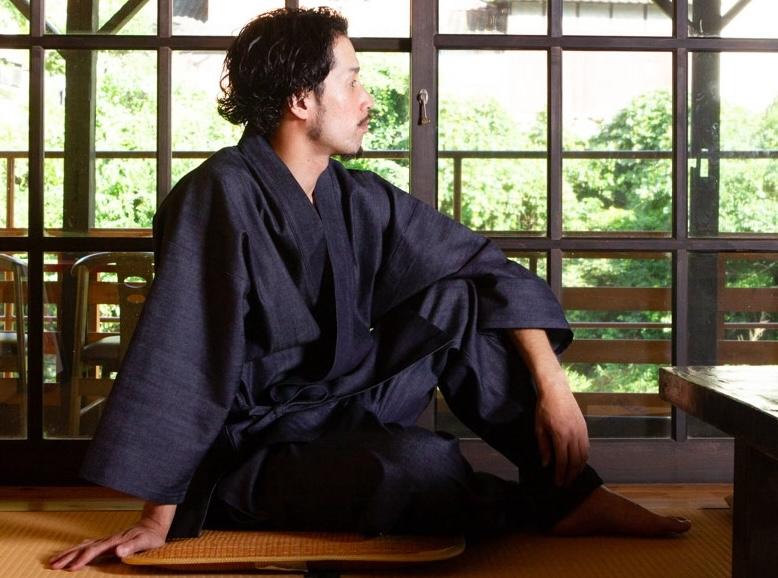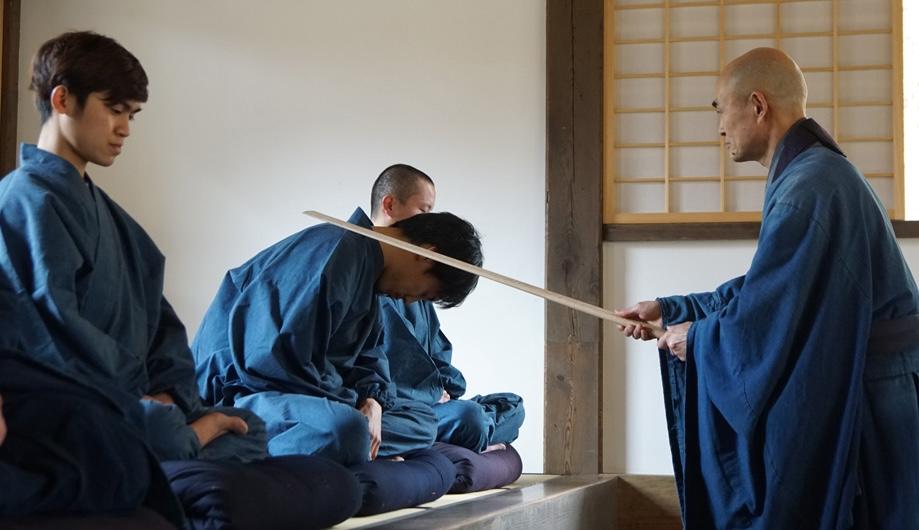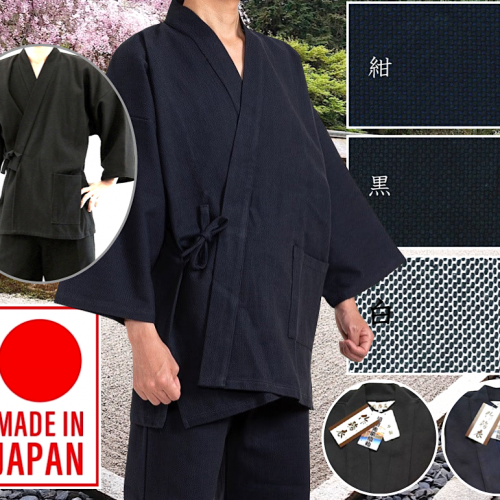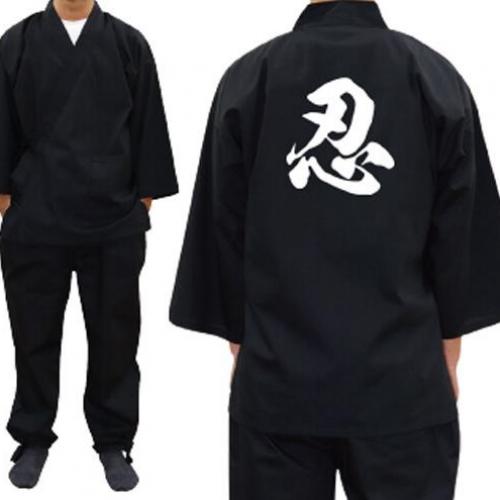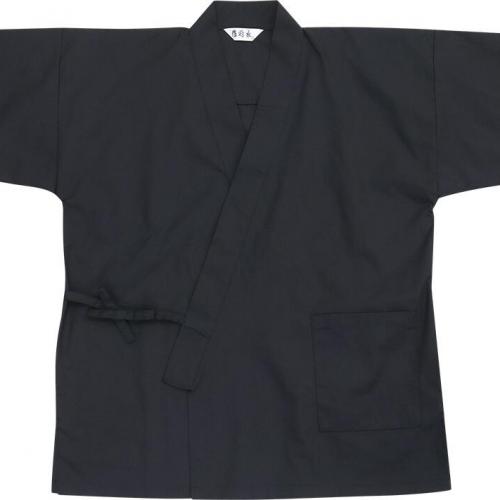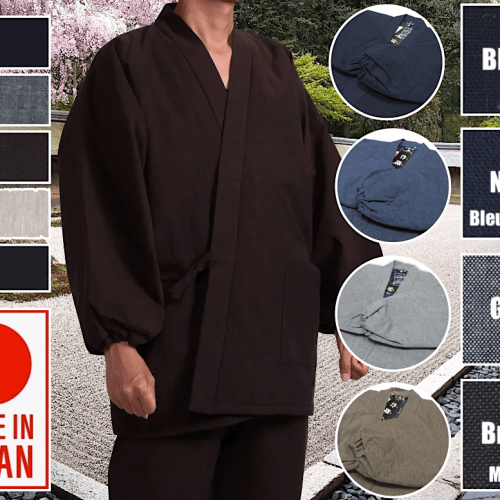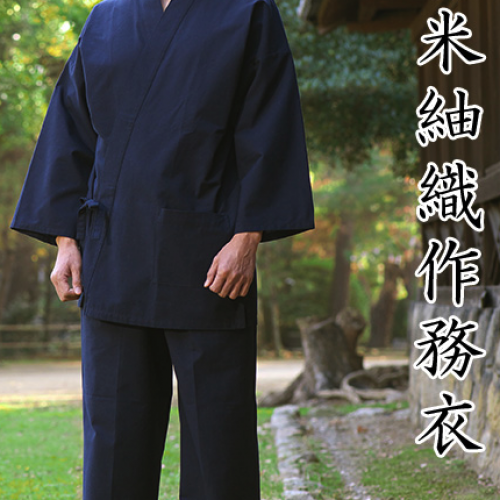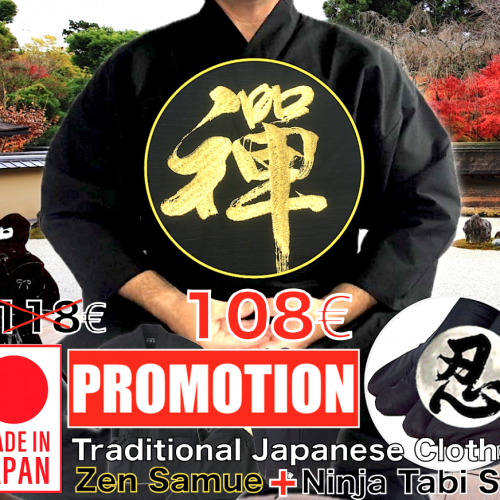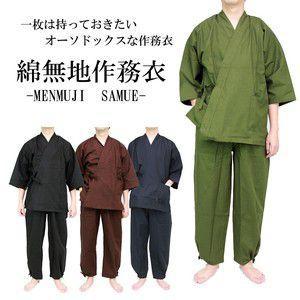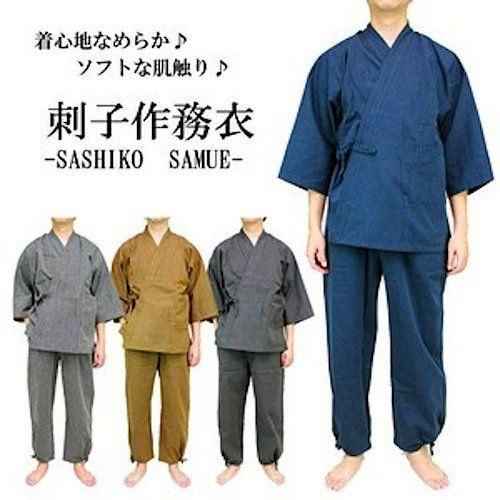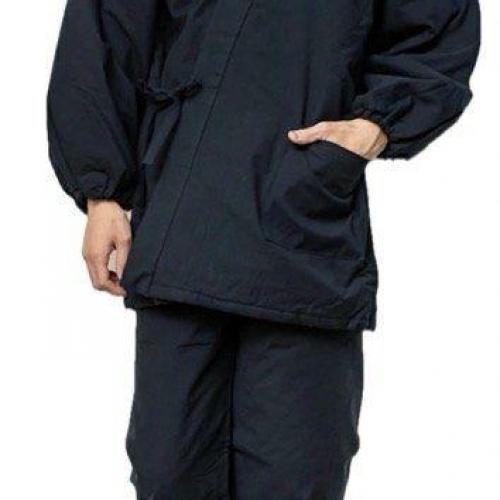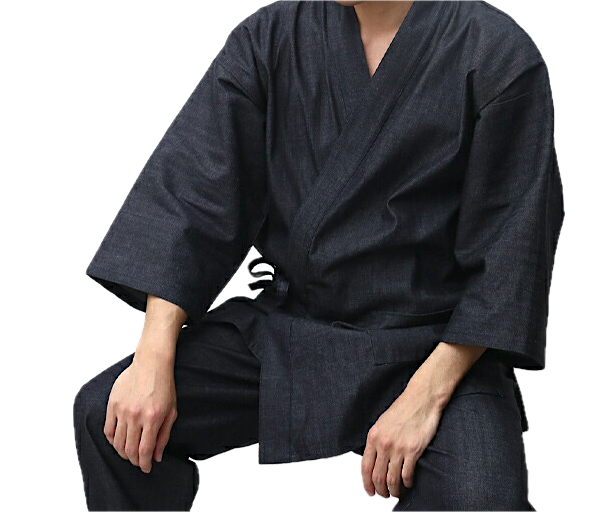
SAMUE
- On 15/03/2024
- In Samue
- 0 comments
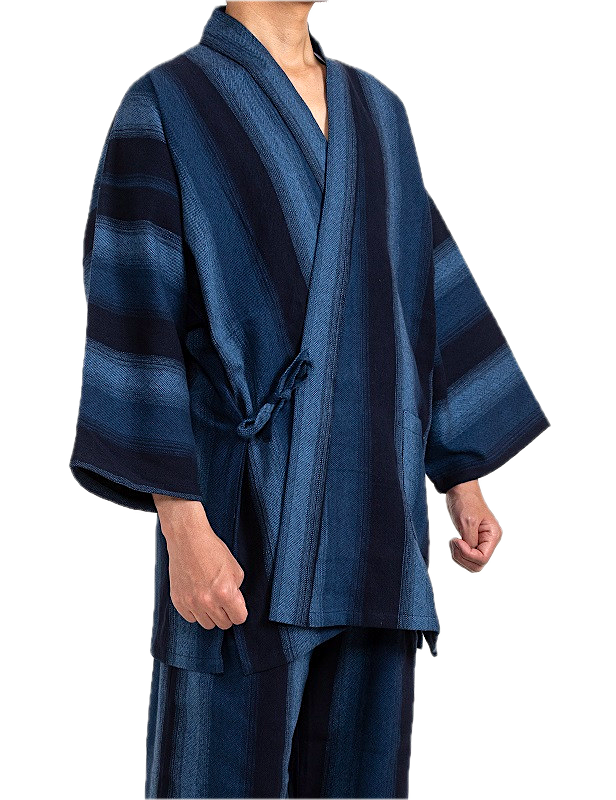 Discover everything you need to know about the Japanese Samue in our exclusive article! Dive into the history, significance, and craftsmanship behind this iconic traditional garment. Learn how the Samue embodies the very essence of Japanese culture, combining elegance, comfort, and a philosophy of life. Don't miss this opportunity to immerse yourself in the fascinating world of the Japanese Samue and discover its spiritual and practical implications. Whether you're a meditation enthusiast or simply in search of a versatile garment for your everyday life, this article offers enriching insights and stylish tips on how to incorporate the Samue into your life. Explore with us the subtle nuances of its colors, the details of its construction, and the way it continues to influence contemporary fashion and spirituality. A cultural and aesthetic journey awaits you!
Discover everything you need to know about the Japanese Samue in our exclusive article! Dive into the history, significance, and craftsmanship behind this iconic traditional garment. Learn how the Samue embodies the very essence of Japanese culture, combining elegance, comfort, and a philosophy of life. Don't miss this opportunity to immerse yourself in the fascinating world of the Japanese Samue and discover its spiritual and practical implications. Whether you're a meditation enthusiast or simply in search of a versatile garment for your everyday life, this article offers enriching insights and stylish tips on how to incorporate the Samue into your life. Explore with us the subtle nuances of its colors, the details of its construction, and the way it continues to influence contemporary fashion and spirituality. A cultural and aesthetic journey awaits you!
Samue
Everything You Need to Know About the Japanese Samue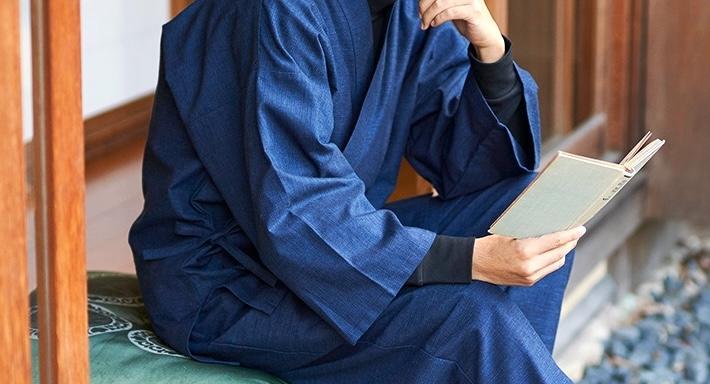 Your Faithful Companion for Ninjutsu and Spiritual Awakening
Your Faithful Companion for Ninjutsu and Spiritual Awakening
Origins
The origin of the samue dates back to the Kamakura period, between the 12th and 14th centuries. During this time, Zen Buddhism saw great expansion in Japan, and many temples were built. Zen monks performed tasks such as cleaning, cooking, woodcutting, and working in the fields as an integral part of their spiritual training. To accomplish these tasks, they needed functional and easy-to-wear clothing, which led to the creation of the samue.
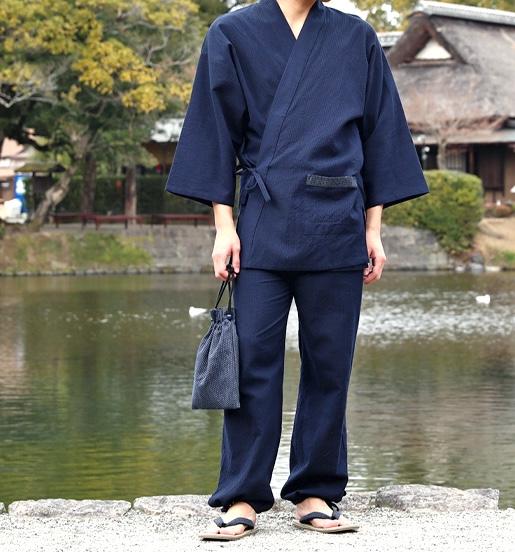 Significance of the Samue
Significance of the Samue
The Samue (作務衣) is a traditional Japanese garment that derives its name from three kanji characters, each contributing to defining its role and importance in Japanese culture.
作 (Sa): This character means "build" or "produce", evoking creation or accomplishment. It reflects the idea that the wearer of the Samue is often engaged in an activity that constructively contributes to the community or environment, whether through manual labor, the arts, or spiritual practices.
務 (Mu): This character means "work" or "duty", referring to daily responsibilities. It emphasizes the utilitarian nature of the Samue, designed to be worn during the execution of daily tasks, facilitating work and service without hindrance from restrictive clothing.
衣 (E): Represents "garment" or "clothing", designating any type of clothing worn on the body. This character anchors the Samue in its primary function as a garment, but also in its ability to envelop the wearer, protecting them while allowing free movement.
Cultural and Spiritual Implications
Together, these characters do not only describe a practical garment; they also evoke a life philosophy. The Samue is traditionally worn by Zen monks during their monastic tasks, highlighting its association with meditation and mindfulness in the accomplishment of daily tasks. Thus, the Samue becomes a symbol of the Zen approach to everyday life: acting with attention, intention, and integrity.
Design and Materials
The early samue were made from hemp or cotton, robust materials designed to allow great freedom of movement. The jacket resembled a tunic reaching the knees with wide sleeves, and pants were added later. The modern samue consists of a jacket reaching the upper thighs and pants that go to the calves or ankles. Commonly used materials are cotton and linen, and the colors are usually subdued such as indigo, brown, and black.
Evolution and Diffusion
During the Edo period (1603-1868), the samue spread beyond monks to become popular among artisans and farmers. In the 20th century, it gained popularity as casual wear among the general public, and today it is used for meditation, yoga, and as everyday loungewear.
Modern Samue
The modern samue retains its traditional design while being available in a variety of colors and patterns. It is worn by both men and women, and is designed to be comfortable in any season. Modernized versions of the samue, created by fashion designers, are also available.
Features of the Samue
- Comfort: Made of cotton or linen, offering softness and breathability.
- Roominess: The loose fit ensures total freedom of movement.
- Simplicity: Clean design reflecting humility and sobriety.
Cuts and Shapes of the Japanese Samue
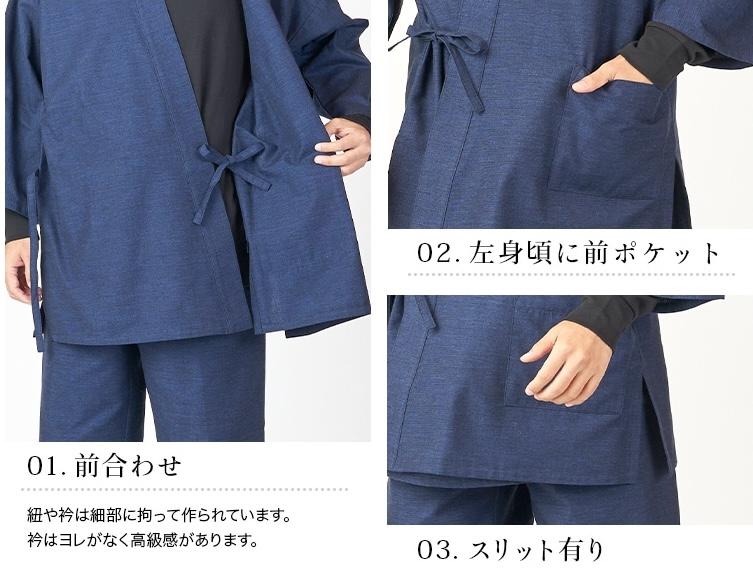
The Japanese Samue, known for its simplicity and functionality, is distinguished by its traditional cuts and shapes that facilitate movement while retaining a clean aesthetic. This garment, initially designed for Zen monks during their daily tasks at the temple, has evolved to become a popular choice among those seeking comfort and style in their daily wardrobe.
1. The Jacket
The Samue jacket is typically loose and fastens at the front using ties or small buttons. It can be worn open for a more casual look or closed for more protection and formality. The lapels are often wide, allowing easy layering and a flexible fit.
2. The Pants
The pants of the Samue are also designed for maximum comfort. They generally have an elastic waist or a drawstring, allowing for an easy and secure fit. The cut is loose, which allows for optimal freedom of movement, crucial for activities like gardening, meditation, or even the fluid movements in martial arts.
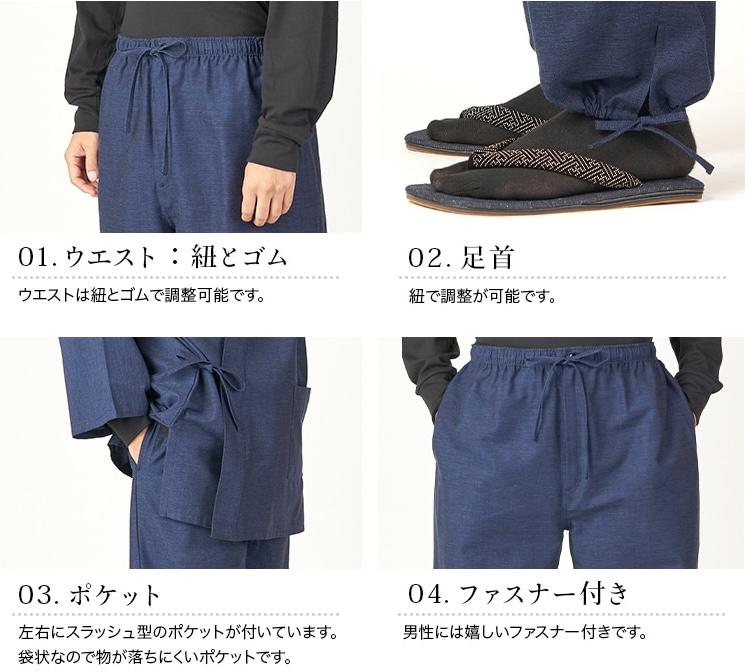 3. The Sleeves
3. The Sleeves
The sleeves of the Samue are traditionally long and wide, which enhances mobility and comfort. They can be easily rolled up for increased functionality or when greater dexterity is required.
4. The Materials
The materials used for the Samue often reflect the tradition of Japanese weaving. Cotton and linen are the most common, providing both durability and the ability to breathe, essential for comfort throughout the day. These fabrics are chosen for their quality and their ability to soften over time, becoming more comfortable as they are worn.
5. The Pockets
Functional and discreet, the pockets of the Samue are often subtly integrated on the sides of the jacket or along the seams of the pants. They are designed to be practical without disrupting the clean lines of the garment.
6. The Finishes
The finishes of the Samue, though simple, are carried out with particular attention to detail. Hems and seams are often double to ensure durability. The simplicity of these finishes underscores the minimalist approach to design, respecting the Japanese aesthetic principles of "wabi-sabi", the beauty in simplicity and imperfection.
Different Colors & Symbolism of the Japanese Samue
 The Japanese Samue is not only recognized for its cut and functionality but also for its colors, which often carry a deep cultural meaning. Historically, the colors of the Samue reflect the principles of simplicity and humility inherent to the Zen tradition, with subtle shades that symbolize deeper aspects of philosophy and Japanese culture.
The Japanese Samue is not only recognized for its cut and functionality but also for its colors, which often carry a deep cultural meaning. Historically, the colors of the Samue reflect the principles of simplicity and humility inherent to the Zen tradition, with subtle shades that symbolize deeper aspects of philosophy and Japanese culture.
1. Indigo Blue (藍色, Aiiro)
Indigo blue is one of the most emblematic colors of the Samue. This deep hue is obtained through a natural dyeing process using indigo leaves. Symbolically, indigo blue represents wisdom and spiritual depth. It is also appreciated for its dirt-resistant properties and for its calming effect, making the garment ideal for meditation and daily activities.
2. Black (黒, Kuro)
Black is another classic color of the Samue. In Japanese culture, black is often associated with formality and elegance, but in the context of the Samue, it symbolizes determination and discipline. Black is also chosen for its practical aspect, as it does not easily show dirt, which is ideal for a work garment.
3. Brown (茶色, Chairo)
Brown, the color of the earth, is frequently used for the Samue because it evokes a connection with nature. This color is often chosen by those who engage in gardening or other outdoor activities, as it reflects the principles of stability and simplicity.
4. Gray (灰色, Haiiro)
Gray is the color of neutrality and balance. It is often chosen for the Samue because it does not distract during meditation practice. Gray can also symbolize humility and discretion, aligned with the Buddhist principles of non-attachment.
5. Natural and Untreated Colors
Natural and untreated colors, such as ecru or beige, are popular for the Samue because they symbolize purity and authenticity. These colors are often chosen for their visual softness and warmth, reinforcing the connection between the wearer and natural elements.
Patterns and Prints
While the Samue is traditionally plain, some modern designs incorporate subtle patterns and prints to enrich their aesthetic. These patterns can vary, incorporating natural elements such as flowers and leaves, or geometric shapes inspired by traditional Japanese art. It is important to note that the patterns often depend on the type of weaving and materials used. For example, the Sashiko fabric, recognizable by its "rice grain shape" pattern, is a popular choice for its aesthetic qualities and durability. These variations allow for personalization of the Samue while respecting its simple and functional essence.
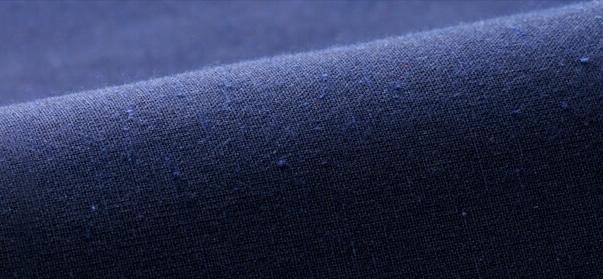
How to Wear the Samue?
 In Casual Attire
In Casual Attire
- Light and Open Jacket: For a casual look, let the jacket flow freely.
- Rolled-up Sleeves: Adds an informal touch by emphasizing the fluidity of the cut.
- Loose or Absent Belt: Creates a relaxed silhouette.
- Casual Pants: Naturally falls on shoes without excessive rolling.
- Soft or Neutral Colors: Promote a relaxing ambiance.
- Minimal Accessories: A beaded bracelet or a discreet watch complements the ensemble.
- Comfortable Shoes: Sneakers or loafers for a practical look.
As Indoor and Sleepwear
- Open and Relaxed Jacket: For more comfort at home.
- Long Sleeves: For warmth during cool nights.
- Loose Pants: For maximum freedom of movement.
- Soothing Colors: Such as light blue or soft gray.
- Soft and Breathable Materials: For a pleasant sensation on the skin.
- Warm Socks: For increased comfort during sleep.
In Traditional Japanese Attire and for Spiritual Practices
- Crossed Jacket Fastened: For a secure fit during spiritual practices.
- Rolled-up Pants: Facilitates physical movements.
- Calm Colors: Promote a soothing ambiance.
- Comfortable Materials: For a pleasant experience during extended sessions.
- Absence of Jewelry and Excessive Accessories: For optimal concentration.
- Bare Feet or Tabi Socks: For a direct connection with the ground.
Comfortable Traditional Attire for Personal Ninjutsu Practice
Crossed Jacket Fastened: Ensures a secure and comfortable fit during Ninjutsu movements.
• Rolled-up Pants: Offers optimal freedom of movement for displacement techniques and kicks in Ninjutsu, whether indoors or outdoors.
• Discreet Colors: Black or deep indigo blue allow better integration into the environment, promoting concentration and discretion.
• Breathable and Comfortable Materials: Cotton or linen for summer and spring, polyester for rainy days. Ensure superior comfort, essential for prolonged training sessions.
• Absence of Jewelry and Accessories: Avoids any inconvenience or distraction, allowing maximum concentration on practice.
• Bare Feet, Tabi Socks, or Jikatabi: Facilitate a direct connection with the ground, essential for balance and stability in Ninjutsu.

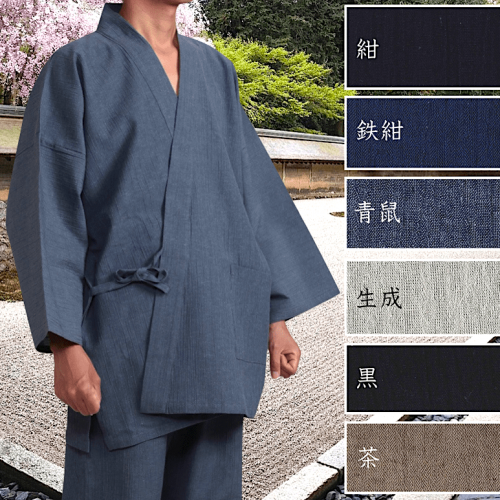 Variants and Types of Samue
Variants and Types of Samue
Summer / Mid-Season Samue
- Light Materials: in linen for a cool feeling even in hot weather.
- Short or Rolled-up Sleeves: For better air circulation.
- Refreshing Colors: Such as light blue or white.
- Casual Design: Promotes freedom of movement and a relaxed style.
Winter Samue
- Warm and Insulating Materials: For protection against the cold.
- Thermal Lining: For additional insulation.
- Long and Closed Sleeves: To protect the arms from the cold.
- Warm and Deep Colors: Such as burgundy or deep blue.

Care and Maintenance of the Samue
- Hand Washing: Preferable to preserve delicate fibers.
- Air Drying: To avoid discoloration and fiber damage.
- Ironing at Low Temperature: With a protective fabric between the iron and the Samue.
- Storage on Hanger: To avoid wrinkles and mold.
Conclusion
The Japanese Samue, combining tradition and functionality, is perfectly adapted to modern needs, whether for the practice of Ninjutsu, meditation, or everyday life.
The Japanese Samue - Everything You Need to Know
1. Is the Samue originally from Japan?
Yes, the Samue is indeed originally from Japan. This traditional garment has its roots in Zen Buddhist culture. It was initially designed to be worn by Buddhist monks during their daily work in temples. The word "Samue" is composed of three kanji characters: "作 (Sa)" meaning "to build" or "to produce," "務 (Mu)" meaning "work" or "function," and "衣 (E)" meaning "clothing." These characters illustrate the utilitarian and practical function of the Samue, which has evolved to become a versatile garment worn by various people for different activities, both spiritual and mundane. In addition to its traditional use by monks, the Samue is now appreciated for its simplicity, comfort, and flexibility, making it a popular choice among artisans, artists, and even martial arts practitioners like those practicing Ninjutsu.
2. What materials are used to make a Samue?
Samue are traditionally made from natural materials such as cotton and linen. These fabrics are chosen for their comfort and breathability, making the Samue pleasant to wear for extended periods. Wazarashi cotton, for example, is often used because of its softness and its ability to become even softer with each wash. This type of cotton is woven using traditional Japanese techniques, ensuring superior quality and durability. Linen is also a popular choice, especially for summer Samue, as it is lightweight and allows for good air circulation, helping to maintain a cool feeling. Additionally, some modern Samue may be made from fabric blends to enhance certain characteristics, such as elasticity or strength. Wool or lined fabrics are also available for colder months, providing extra insulation against the cold.
3. Can the Samue be worn in the summer?
Yes, the Samue can be worn in the summer. In fact, there are versions specifically designed for hot climates. Summer Samue are typically made from lightweight and breathable materials like light cotton or linen, which allow for good air circulation and help maintain a cool feeling even in hot weather. The sleeves of these Samue are often shorter, and the cut is relaxed to promote comfort. Some summer models may also feature summer motifs or refreshing colors, such as light blue or white, which accentuate the garment's light and summery aesthetic. In addition to being worn at home or for casual activities, summer Samue are perfect for festivals and outdoor events, offering a comfortable and elegant alternative to Western clothing. The choice of materials like linen also helps absorb moisture, which is particularly appreciated during hot summer days in Japan.
4. How to care for a cotton Samue?
Washing
Caring for a cotton Samue is essential to prolong its life and maintain its appearance. It is recommended to hand wash your Samue with cold or lukewarm water to preserve the delicate fibers of the fabric. Use a mild detergent specifically for delicate colors to prevent fading. If you must use a washing machine, place the Samue in a delicate laundry bag to minimize friction and damage. Wash it separately from other clothes to avoid color transfer.
Drying
For drying, opt for air drying by hanging the Samue in the shade. Avoid direct sunlight to prevent discoloration. It is also advisable to avoid using a tumble dryer, as the heat can damage the fibers and reduce the fabric's longevity.
Ironing
If necessary, iron the Samue at a low temperature and place a thin cloth between the iron and the garment to protect the fabric.
Storage
For storage, hang the Samue in a wardrobe on a hanger to avoid creases. Ensure the storage area is dry to prevent mold, and use moisture-absorbing sachets if necessary.
5. Is the Samue suitable for practicing Ninjutsu?
Yes, the Samue is perfectly suitable for practicing Ninjutsu. This traditional Japanese garment is appreciated for its loose fit and freedom of movement, essential for physical activities such as martial arts. Made from natural materials like cotton and linen, the Samue is both comfortable and breathable, allowing practitioners to move freely without being hindered by restrictive clothing. The simplicity of its design, without complex belts or accessories, makes it ideal for the quick and fluid movements needed in Ninjutsu. Additionally, the Samue offers great versatility, being suitable for both indoor and outdoor training. Its sober and functional aesthetic reflects the values of discipline and simplicity cherished in martial arts. Furthermore, it is durable enough to withstand the rigors of training while being easy to care for, making it a practical and long-lasting choice for Ninjutsu practitioners.
6. What is the historical origin of the Samue?
The Samue has a deeply rooted origin in Japanese Zen Buddhist tradition. Initially designed to be worn by Buddhist monks during their daily work in temples, the Samue was a utilitarian garment that allowed for great freedom of movement while being comfortable. The term "Samue" is derived from three kanji characters: "作 (Sa)" meaning "to build" or "to produce," "務 (Mu)" meaning "work" or "function," and "衣 (E)" meaning "clothing." These characters clearly illustrate the function of the Samue as work clothing. Monks wore the Samue during samu activities, which included tasks such as chopping wood, sweeping, and maintaining the temple. Over time, the Samue evolved to become a versatile garment worn by various people for different activities, both spiritual and mundane. Today, the Samue is appreciated not only for its comfort and practicality but also for its simple and elegant aesthetic that embodies the essence of Japanese culture.
7. Can the Samue be worn outdoors?
Yes, the Samue can be worn outdoors. Although it is traditionally associated with indoor use, particularly for household chores and meditation, the Samue is also suitable for outdoor wear. Its loose and comfortable fit makes it a practical choice for outdoor activities such as walking, gardening, or even light errands. Natural materials like cotton and linen allow for good ventilation, which is especially pleasant in warm weather. In winter, thicker versions of the Samue, often lined, provide extra insulation against the cold. The Samue's simple and functional design also makes it an elegant option for casual outings. Many Japanese people wear the Samue at traditional festivals or cultural events, reflecting their appreciation for this garment that combines tradition and modernity. Whether at home or outdoors, the Samue offers unparalleled comfort and freedom of movement.
8. What are the differences between a Samue and a Jinbei?
The Samue and Jinbei are two traditional Japanese garments, but they have notable differences. The Samue consists of two pieces: a jacket and pants, and is designed to be worn year-round. It is often made of cotton or linen, and its loose fit provides great freedom of movement, making it suitable for various activities, including household chores and meditation. In contrast, the Jinbei is a summer garment consisting of a short-sleeved jacket and loose shorts. It is made from lightweight and breathable materials such as light cotton or linen to allow good air circulation during the hot months. The Jinbei is often worn during summer festivals and outdoor events in Japan. Another notable difference is that the Jinbei is typically adorned with summer motifs, such as flowers or waves, while the Samue tends to be more sober and plain, although it can also be decorated with subtle patterns. Therefore, the Jinbei is specifically designed for summer, while the Samue can be worn year-round and is suitable for a variety of uses.
9. Can children wear Samue?
Yes, children can also wear Samue. There are miniature versions of the Samue specially designed for children, allowing the youngest to enjoy the comfort and practicality of this traditional Japanese garment. Children's Samue are made from the same natural materials as those for adults, such as cotton and linen, ensuring optimal comfort for children. These garments are particularly appreciated for their loose fit, which allows great freedom of movement, ideal for play and daily activities. Children's Samue are available in a variety of colors and patterns, ranging from classic hues like indigo blue to more playful designs suited to children's tastes. In addition to being worn at home, children's Samue are also perfect for festivals and cultural events, allowing families to share this clothing tradition. Giving a Samue to a child is also considered a respectful and thoughtful gesture, symbolizing the wish for well-being and comfort.
10. Is the Samue comfortable for meditation?
Yes, the Samue is particularly comfortable for meditation. Originally designed to be worn by Buddhist monks during their daily activities and meditation practice, the Samue offers a loose fit and great freedom of movement, essential for maintaining a comfortable posture during prolonged periods of meditation. Natural materials like cotton and linen allow for good air circulation, helping to regulate body temperature and maintain a comfortable feeling. Additionally, the simplicity of the Samue's design, without complex belts or accessories, promotes a distraction-free meditation experience. The Samue's wrap-around jacket can be adjusted for better comfort, and the elastic or drawstring pants ensure a secure fit without constricting the waist. These features make the Samue an ideal choice for meditation retreats, zazen sessions, and other spiritual practices requiring comfortable and practical clothing.
11. What traditional accessories are worn with a Samue?
Several traditional accessories can be worn with a Samue to complete the look and add comfort. Tabi socks, which have a separation between the big toe and the other toes, are often worn with Geta or Zori sandals. Geta are wooden sandals, while Zori are more flexible and often made from rice straw or synthetic materials. These traditional shoes add an authentic touch to wearing the Samue while being practical for both indoor and outdoor movements. Another common accessory is the Hanten jacket, a quilted jacket worn over the Samue during the colder months to add an extra layer of warmth. Silk hairpins, such as Kanzashi, are also popular, especially among women, to elegantly keep hair in place. Finally, simple Obi belts can sometimes be added for further adjustment, although the Samue is designed to be worn without the complex belts associated with traditional kimonos.
12. Is the Samue appropriate for Japanese festivals?
Yes, the Samue is perfectly appropriate for Japanese festivals. This traditional garment is appreciated for its simplicity and comfort, making it ideal for long days spent participating in festival activities. Whether for spring, summer, or autumn festivals, the Samue offers practical clothing that allows great freedom of movement. In summer, lighter versions of the Samue in cotton or linen are particularly popular, as they help stay cool while participating in festivities. The sober colors and discreet patterns of the Samue make it an elegant option that respects traditions while being versatile enough to be worn in various festive contexts. Additionally, the Samue's loose fit allows it to be comfortably worn with traditional accessories like Geta sandals and Tabi socks, completing the traditional Japanese look. Participating in festivals in a Samue also allows for a deeper connection to Japanese culture and sharing this experience with other participants.
13. How to choose the size of a Samue?
Choosing the size of a Samue is relatively simple, as this garment is designed to be loose and comfortable. First, refer to the size guide provided by the manufacturer or seller. Samue are generally available in standard sizes such as S, M, L, XL, and XXL. To determine the most suitable size, measure your chest and waist circumference and compare these measurements to those indicated in the size guide. It is recommended to choose a slightly larger size if you are between two sizes, as the Samue is designed to be worn in a relaxed and loose manner. Also, be sure to check the length of the sleeves and pants, especially if you are particularly tall or short. Some modern Samue come with adjustable drawstrings at the waist and wrists, offering additional flexibility for a perfect fit. Finally, keep in mind that cotton and linen can shrink slightly when washed, so it may be wise to choose a slightly larger size to compensate for this.
14. Is the Samue available in different colors?
Yes, the Samue is available in a variety of colors. Traditionally, Samue are made in sober and natural colors like indigo blue, black, and brown. Indigo blue, in particular, is a classic color associated with traditional Japanese dyeing and is highly valued for its elegance and durability. Black symbolizes simplicity and elegance, while brown evokes the earth and nature, reflecting harmony with the environment. However, with evolving trends and individual preferences, modern Samue are also available in a wider range of colors. You can find Samue in lighter and brighter shades, such as gray, beige, light blue, and even pastel colors. Some Samue may also be adorned with discreet patterns or embroidery to add a touch of originality and allow for more individual customization. Regardless of the color you choose, the Samue maintains its simple and elegant aesthetic that embodies the essence of Japanese culture.
15. Can a Samue be personalized with embroidery?
Yes, it is possible to personalize a Samue with embroidery. Many artisans and manufacturers offer customization options to add specific patterns or names to the Samue. Embroidery can be placed on different parts of the garment, such as the sleeves, back, or near the pockets, allowing wearers to express their individuality while maintaining the traditional aesthetic of the Samue. Commonly embroidered patterns include traditional Japanese symbols, flowers, animals, or even kanji characters representing values or names. Personalization through embroidery not only adds a touch of originality but can also make the Samue more meaningful, especially if given as a gift. The embroidery is usually done with high-quality threads that withstand washing well, ensuring that the pattern remains intact and attractive over time. Whether for special occasions or simply to add a personal touch to your outfit, embroidery is an excellent way to make your Samue unique.
16. Is the Samue commonly worn in ryokans?
Yes, the Samue is commonly worn in ryokans, which are traditional Japanese inns. During your stay at a ryokan, it is not uncommon to be offered a Samue in addition to or instead of a yukata, a light kimono robe. The Samue is appreciated in ryokans for its comfort and practicality. It is elegant enough to be worn in the common areas of the inn while being comfortable enough to be used as pajamas in your room. Many guests choose to wear the Samue during their stay to fully enjoy the traditional Japanese experience. The Samue also offers practical pockets for storing your room keys, phone, and money, making it a practical choice for moving around the inn. Whether relaxing in your room, participating in a tea ceremony, or strolling through the ryokan's gardens, the Samue is a versatile option that enhances your stay by offering both comfort and style.
17. What are the advantages of wearing a Samue in winter?
Wearing a Samue in winter has several advantages. First, winter Samue are often made from thicker and insulating materials such as lined cotton, wool, or other thermal fabrics, providing effective protection against the cold. These materials help maintain body heat, ensuring optimal comfort during the coldest months. Additionally, winter Samue may feature a thermal lining for extra insulation, ensuring that heat is retained inside the garment. The long and closed sleeves of winter Samue protect the arms from the cold, while the thick belts ensure a comfortable fit and extra insulation around the waist. Moreover, the warm and deep colors of winter Samue, such as burgundy, dark green, or navy blue, add a seasonal touch to the outfit. Some winter sets also include matching hanten jackets, which are traditional quilted jackets, adding an extra layer of warmth and style. These features make winter Samue an ideal choice for staying comfortable and elegant during the cold season.
18. Is the Samue used in modern Japanese fashion?
Yes, the Samue has influenced modern Japanese fashion and is often integrated into contemporary clothing collections. Its simple and functional design, combined with its cultural richness, makes it a source of inspiration for many designers. Modernized versions of the Samue are created using innovative fabrics and fitted cuts while retaining the essence of its simplicity and comfort. These garments are often featured in fashion shows and high-end fashion boutiques in Japan and abroad. Additionally, the Samue has become popular among younger generations for its casual and elegant style, perfect for everyday wear or special occasions. The versatility of the Samue allows it to be worn in various ways, whether traditionally or combined with Western fashion elements. This fusion of styles creates unique outfits that honor traditions while embracing modernity. The Samue continues to gain popularity not only as a traditional garment but also as a must-have fashion item in the contemporary fashion landscape.
19. Can a Samue be machine washed?
Yes, it is possible to machine wash a Samue, but it is important to take certain precautions to preserve the quality of the fabric. First, use a gentle cycle with cold or lukewarm water to minimize the risk of shrinking and fading. Place the Samue in a delicate laundry bag to protect the fibers and avoid excessive friction with other clothes. Use a mild detergent specifically for delicate colors to prevent fading and maintain the fabric's vibrancy. It is also recommended to wash the Samue separately from other clothes to avoid color transfer. After washing, opt for air drying by hanging the Samue in the shade to avoid discoloration due to direct sunlight exposure. Avoid using a tumble dryer, as the heat can damage the fibers and reduce the fabric's longevity. If necessary, iron the Samue at a low temperature and place a thin cloth between the iron and the garment to protect the fabric. By following these tips, you can machine wash your Samue while preserving its quality and appearance.
20. Can the Samue be worn at any age?
Yes, the Samue can be worn at any age. There are versions of the Samue suitable for children, adults, and the elderly, allowing everyone to enjoy the comfort and practicality of this traditional Japanese garment. For children, specially designed Samue are available, offering smaller sizes and playful patterns suited to younger tastes. Adult Samue are made in a variety of sizes to fit all body types and can be worn for various occasions, whether at home, at work, or during festivals and cultural events. The elderly particularly appreciate the Samue for its loose and comfortable fit, which allows for great freedom of movement without restricting daily activities. The simplicity and functionality of the Samue make it an ideal choice for all generations, reflecting the spirit of Japanese culture that values harmony and respect for all ages. Whether relaxing at home, practicing spiritual activities, or participating in social events, the Samue is a versatile garment suitable for everyone.
21. Is the Samue unisex?
Yes, the Samue is unisex and is commonly worn by both men and women. Although the Samue was initially designed for Zen Buddhist monks, it was quickly adopted by nuns and later by the general public. Today, the Samue is considered a unisex garment, suitable for all genders. Samue manufacturers may offer slight variations in design to better appeal to a specific audience, such as the availability of different colors and patterns, or the presence of a fly on men's models. However, the overall cut and functionality of the Samue remain the same, providing exceptional comfort and freedom of movement for all users. The unisex nature of the Samue reflects the values of simplicity and humility in Japanese culture, allowing everyone to wear this garment without gender distinction. Whether for household chores, spiritual activities, or leisure, the Samue offers a versatile and inclusive clothing solution for everyone.
-
Deluxe Sashiko Samue cotton Made in Japan
Traditional set consisting of loose-fitting pants and a kimono jacket made of rice grain cotton, “Sashiko”...229,00€ inc. tax
-
Ninja Samue
Discover the Samue Ninja in black with the iconic “忍” print, a traditional Japanese garment...85,00€ inc. tax
-
Winter Samue Enseki Gaisen Made in Japan
Discover the Enseki Gaisen Samue, an exceptional traditional Japanese garment meticulously crafted using...229,00€ inc. tax
-
Deluxe Chijimi Ori Samue cotton Navy "Made in japan"
100 % coton de qualité supérieur couleur bleu marine.Motif:rayé.Fabrication au Japonau JaponLuxe samue...108,00€ inc. tax
-
Deluxe Momen Samue Made in Japan
Discover the Deluxe Momen Samue, crafted from 100% premium cotton. Available in black, navy, and blue,...108,00€ inc. tax
-
Deluxe Momen Samue Made in Japan
Discover our Samue Zen + Tabi Ninja set, a perfect blend of tradition and modernity. Made in Japan with...118,00€ inc. tax
-
Classic Denim cotton Zen Samue
Made in china under license from japanese manufacturer Composition: 100% cotton jeans "Denim" Available...79,00€ inc. tax
-
Classic Momen cotton Zen Samue
Made in china under license from japanese manufacturer Material: 100% cotton standart quality Available...79,00€ inc. tax
-
Classic Sashiko cotton Zen Samue
Made in china under license from japanese manufacturer Material: 100% cotton sashiko weave...79,00€ inc. tax
-
Winter Samue Enseki Gaisen Black L Size Made in Japan
Discover the Enseki Gaisen Samue, an exceptional traditional Japanese garment meticulously crafted using...229,00€ 199,00€ inc. tax
Add a comment

